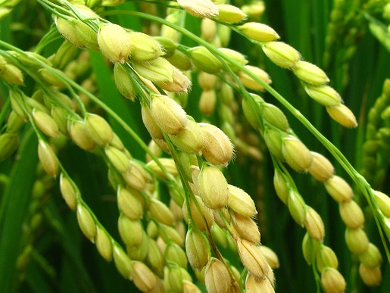CuO nanoparticles (NPs) are increasingly used and introduced into agricultural soil, e.g., by the reuse of sewage sludge from wastewater treatment plants and the usage of nanorelated fertilizers, herbicides, and pesticides. The uptake and accumulation of metal-based NPs by crops may contaminate the food chain and lead to unexpected risks for human health.
Jiyan Shi, Zhejiang University, Hangzhou, China, and colleagues, investigated the fate and transformation of CuO nanoparticles (NPs) in the soil-rice system during the rice lifecycle. They found that high concentrations of CuO NPs (500 and 1000 mg/kg) significantly increased the pH of the soil. A positive correlation was found between the concentration of the CuO NPs and the accumulation of Cu. Flooding conditions and plant growth led to a decrease of the bioavailability of CuO. The bioavailability was reduced by 69.84 % during growth of the plant. The alternating drying-wetting process increased the CuO NP bioavailability by 165 %.
1000 mg/kg CuO NPs significantly decreased the water content in shoots at seedling stage and in the roots at tillering stage. Higher CuO NPs (500 and 1000 mg/kg) significantly reduced the grain yield. The negative effect on the plant growth was higher for CuO NPs than for bulk particles. Most Cu was accumulated in the roots. CuO NPs increased the accumulation of Cu as well as Zn and Fe in the grain compared to control plants.
The team found that CuO NPs were translocated from the soil to the plant and Cu was accumulated especially in the aleurone layer of the rice. However, it was not found in polished rice.
- Fate and Transformation of CuO Nanoparticles in the Soil−Rice System during the Life Cycle of Rice Plants,
Cheng Peng, Chen Xu, Qinglin Liu, Lijuan Sun, Yongming Luo, Jiyan Shi,
J. Am. Chem. Soc. 2017.
DOI: 10.1021/acs.est.6b05882



